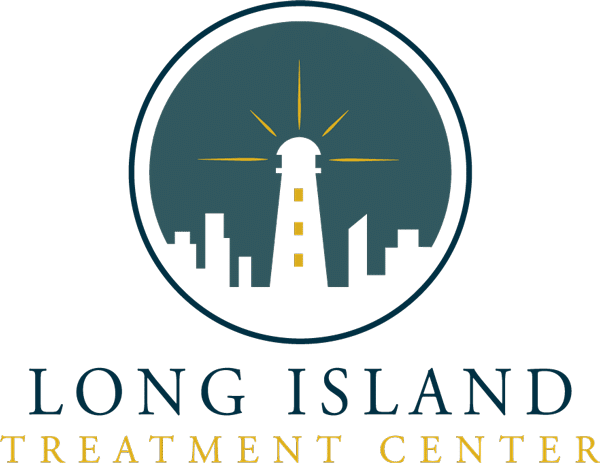Hallucinogenic drugs have various uses. Some take them for recreational purposes. Others take them to treat certain menthol health conditions.
Intention aside, prolonged usage of these psychedelic drugs can prompt hallucinogen addiction, which can cause physical and psychological turmoil.
That’s where we come in. With trained healthcare professionals and modern therapeutic techniques, we offer the most advanced hallucinogen addiction treatment in Long Island.
If you think you might have an addiction problem, don’t hesitate to contact us.
Table of Contents
What Are Hallucinogens?
Hallucinogens are mind-altering psychedelic drugs that are chemically synthesized or derived from plants and fungi. These drugs can affect your vision, hearing, taste, mood, and thoughts.
At high doses, they can even change your perception of reality, prompting visual, auditory, and sensory hallucinations.
Hallucinogens disrupt your senses by interfering with the communication between different networks in your brain. However, that doesn’t mean they all have the same effect.
For example, classic hallucinogens block the neural circuits that use serotonin. Responsible for the way you receive sensory information, interfering with the activity of serotonin can alter your sensory perception.
Other Hallucinogens target a neurotransmitter called glutamate, causing dissociation. These are called dissociative drugs.
What Are the Most Common Types of Hallucinogens?
Now that you understand how hallucinogens work, let’s see the most common variants, according to the National Institute on Drug Abuse.
Lysergic Acid Diethylamide (LSD)
LSD is one of the most effective hallucinogens to cause people to lose touch with reality. Frequent usage might cause your senses to blend together. That means you can taste colors or hear visions.
Despite its horrific effects, LSD isn’t addictive per se. You won’t exhibit extreme drug-seeking behavior with that hallucinogen. However, you can build tolerance over time, which would prompt you to increase the dose to experience the same high.
Peyote
The small peyote cactus is native to South America, the United States, and Mexico. It’s one of the oldest psychedelics on this list. In fact, Native Americans used to consume it as part of their religious rituals, thinking it allowed them to communicate with God.
At first glance, it may not look like a hallucinogenic drug. However, it contains an active ingredient called mescaline that causes mental and emotional intoxication.
Ketamine
Ketamine is an anesthetic that doctors use in surgery. However, its numbing effects have prompted psychologists to prescribe it for patients struggling with depression and suicidal thoughts.
Unfortunately, that relaxation only lasts less than an hour, which pushes hallucinogen users to increase the dose to prolong its effect, leading to addiction.
Long-term usage of ketamine induces a variety of side effects. By far, however, the most controversial one is the out-of-body experience it evokes. It can be pleasant or terrifying, depending on the users.
Dimethyltryptamine (DMT)
DMT is one of the fastest-acting hallucinogenic drugs on this list, with its euphoria taking effect instantly, although it also lasts less than an hour.
DMT users either smoke it with a pipe or brew it as tea, like yagé or ayahuasca. Some inject it to experience its effects more intensely, but that’s not a common practice.
Psilocybin
Psilocybin is a psychoactive compound you can find in various species of fungi. That’s why It’s known on the market as shrooms or magic mushrooms.
That hallucinogen’s effects are unpredictable, as it can both relieve or cause mental health issues.
Phencyclidine (PCP)
PCP, also known as angel dust, is one of the most addictive hallucinogenic drugs on this list because it alters your brain’s composition. Depending on how you take it, you can either experience clarity of thought or delusions and distress.

What Are the Side Effects of Hallucinogens?
Although hallucinogens aren’t inherently harmful, consistent usage can induce adverse physical and psychological long-term effects (bad trips).
Physical Hallucinogenic effects include:
- Increased body temperature and blood pressure
- Loss of appetite
- Nausea
- Mydriasis (dilated pupils)
- Sleeplessness
- Uncoordinated movements
- Excessive sweating
- Muscle weakness
- Seizures
Psychological hallucinogenic effects include:
- Confusion
- Memory loss
- Anxiety
- Extreme panic
- Aggression
- Flashbacks
- Mood swings
- Hallucinogen persisting perception disorder (HPPD)
It’s worth noting that hallucinogenic users don’t experience these side effects all at once.
How Do People Get Addicted to Hallucinogens?
Before we delve into the addictiveness of hallucinogens, you should know that not all variants are addictive.
For example, LSD isn’t addictive. You can take it without worrying about cravings. However, you can easily build a tolerance to it, which can get you to increase the dose to experience the same high.
That said, with variants like PCP and ketamine, addiction usually starts with recreational usage. People take them to experience that euphoric effect, build tolerance over time, and then start experiencing cravings.
What Are the Symptoms of Hallucinogen Addiction?
The symptoms of hallucinogen abuse differ from one patient to another, depending on the intensity and duration of usage. That said, here’s a list of the most common physical and psychological symptoms.
Physical symptoms:
- Muscle spasms
- Vomiting
- Prisperation
- Increased heart rate
- Numbness
- Vision problems
- Dry mouth
- Reddening in the face and skin
Psychological symptoms:
- Loss of interest in usual activities
- Psychosis
- Paranoia
- Anxiety
- Depression
- Delusions and hallucinations
- Schizophrenia
- Disassociation
- Concentration issues
Hallucinogen Addiction Treatment Near You
Unfortunately, there isn’t a treatment program for hallucinogen addiction. However, regular treatment programs can be just as effective.
Despite not having specialized treatment, they can create the right environment for you to fight that addiction. Here’s what these programs offer:
Partial Hospitalization Program (PHP)
PHP is suitable for patients who don’t want to do inpatient treatment. They spend the day going through treatment at the facility and return home when they’re done.
Although it’s more limited than the classic inpatient program, it still offers various treatment options.
Individual Therapy
Whether it’s hallucinogens, opioids, or steroids, people struggling with drug use experience shame and guilt, which prompts them to continue using. Therapy, like CBT and DBT, can help them work through that stigma and build a positive self-image.
It also allows them to understand their drug addiction along with all the behavioral patterns that led to it and teaches them to develop healthy coping mechanisms.
Group Therapy
The biggest advantage to group therapy is that it gives you the chance to interact with people going through the same turmoil as you. You get to share your experience with substance abuse in a shame-free environment, and you’ll get nothing but empathy and support.
It’s a unique community where members help and uplift each other, giving you the best chance to recover.
Intensive Outpatient Program (IOP)
Intensive outpatient programs are a suitable option for people who don’t need constant monitoring, as you also get to go home at the end of the day. These programs include:
12-Step Facilitation
12-step programs encourage people struggling with substance use disorder to resist cravings by staying engaged with the community the facility creates.
Motivational Interviewing
As the name suggests, motivational interviewing helps people find the motivation to continue with the treatment. It sounds simple, but it’s one of the most crucial components of an addiction treatment program.
After all, a lot of patients quit because they lack the energy and motivation to continue withstanding withdrawal symptoms. So, this can be the line between success and failure.
Outpatient Program
Outpatient programs are a viable option if you want to spend less time in the treatment center and more time with your family.
Family Therapy
Family therapy allows your family members to understand what you’re going through and strengthens your bonds to increase your chances of recovery.
Job Research
Financial struggles cause stress that can prompt patients to relapse. That’s why some outpatient programs help patients find work to ease the transition from the treatment program to normal life.
Final Thoughts
Although hallucinogens don’t get as much attention, they’re still as addictive as opioids and other drugs. So, if you or your loved ones are struggling with hallucinogen abuse, contact us immediately.
The healing process won’t be easy, but with our qualified staff and your determination, you’ll return to your normal life in no time.

